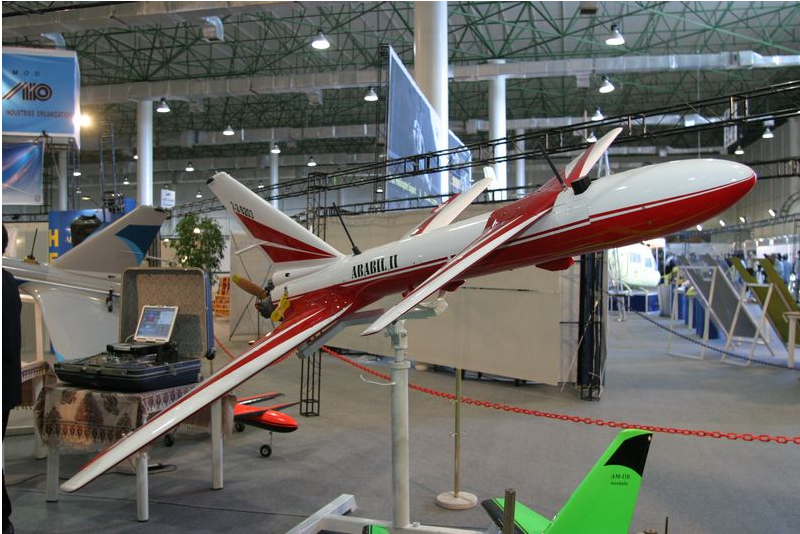[Archive] UAVs Over Syria
This post first appeared on the website OSIMINT on January 8, 2014.
It is preserved here as an archive. Some brief edits have been made for clarity and grammar.
---
Before the demands of war led to the use of rotary and fixed-wing attack aircraft, pro-Assad forces in Syria used lightweight UAVs for aerial surveillance. Since they were first documented over Homs in February 2012, footage of Iranian built AB-3 tactical UAVs have increasingly appeared in open-source reporting. Since the Summer of 2013 AB-3s have been joined by smaller Yasir UAVs, also built by Iran. Insurgents downed their first UAV in May 2013 and have brought down at least eight more since.
Open-source reporting indicates that the majority of UAVs have been deployed to Damascus. 80% of all AB-3 sightings took place over the capital. This likely reflects both the importance of the capital, and the project's evidence bias. There's no way to know whether or not aerial activity over Damascus is more likely to be recorded than elsewhere around the country (for example, due to the greater population density).
In Damascus itself, the AB-3 sightings are - unsurprisingly - concentrated on the city's peripheral suburbs, which have been the focus of insurgent activity around the capital. 13 sightings have been reported over West Ghouta, while 26 have been reported over East Ghouta.
There is some difficulty in positively identifying the specific district in question. For one, each district is small enough that any flight would inevitably cross a broad swath of territory. Thus, trying to pinpoint just one district is somewhat meaningless.
Like the pattern of geographic deployment, the distribution of sightings over time is simlarly asymmetric. Through all of 2012, only four AB-3s were spotted over Damascus, and all but one of these were spotted in the last two months of the ear. This number skyrocketed in 2013. Between January and April, Damascus averaged two sightings/month, but in May this number jumped to 15. This declined to an average of just under three sightings/month between June and August, and 1.25 per month between September and December (though this number jumps to 1.75 if the two Yasirs sighted during this time are included in the tally).
As one last remark it is worth mentioning that these maps are a work in progress. It is unlikely that every incident has been documented, and some of those that have may be misidentified. Thus, the author invites readers to submit any corrections they feel may enhance the accuracy of these maps.
It is preserved here as an archive. Some brief edits have been made for clarity and grammar.
---
Before the demands of war led to the use of rotary and fixed-wing attack aircraft, pro-Assad forces in Syria used lightweight UAVs for aerial surveillance. Since they were first documented over Homs in February 2012, footage of Iranian built AB-3 tactical UAVs have increasingly appeared in open-source reporting. Since the Summer of 2013 AB-3s have been joined by smaller Yasir UAVs, also built by Iran. Insurgents downed their first UAV in May 2013 and have brought down at least eight more since.
Open-source reporting indicates that the majority of UAVs have been deployed to Damascus. 80% of all AB-3 sightings took place over the capital. This likely reflects both the importance of the capital, and the project's evidence bias. There's no way to know whether or not aerial activity over Damascus is more likely to be recorded than elsewhere around the country (for example, due to the greater population density).
In Damascus itself, the AB-3 sightings are - unsurprisingly - concentrated on the city's peripheral suburbs, which have been the focus of insurgent activity around the capital. 13 sightings have been reported over West Ghouta, while 26 have been reported over East Ghouta.
There is some difficulty in positively identifying the specific district in question. For one, each district is small enough that any flight would inevitably cross a broad swath of territory. Thus, trying to pinpoint just one district is somewhat meaningless.
Like the pattern of geographic deployment, the distribution of sightings over time is simlarly asymmetric. Through all of 2012, only four AB-3s were spotted over Damascus, and all but one of these were spotted in the last two months of the ear. This number skyrocketed in 2013. Between January and April, Damascus averaged two sightings/month, but in May this number jumped to 15. This declined to an average of just under three sightings/month between June and August, and 1.25 per month between September and December (though this number jumps to 1.75 if the two Yasirs sighted during this time are included in the tally).
As one last remark it is worth mentioning that these maps are a work in progress. It is unlikely that every incident has been documented, and some of those that have may be misidentified. Thus, the author invites readers to submit any corrections they feel may enhance the accuracy of these maps.






Comments
Post a Comment